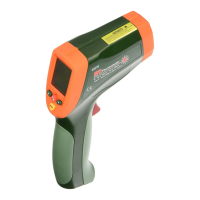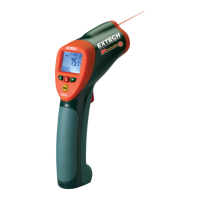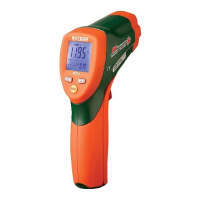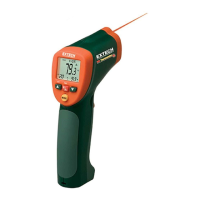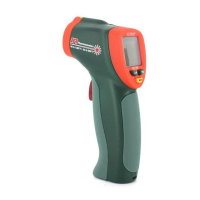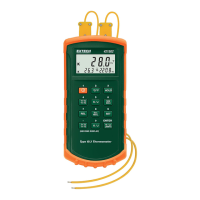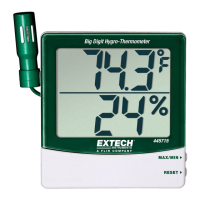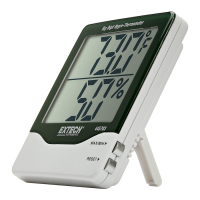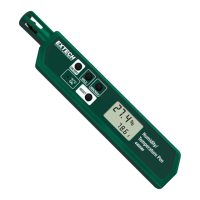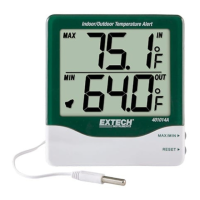42509 V1.0 07/09
7
IR Measurement Notes
1. The object under test should be larger than the spot (target) size calculated by the field
of view diagram (printed on the side of the meter and in this guide).
2. Before measuring, be sure to clean surfaces that are covered with frost, oil, grime, etc.
3. If an object's surface is highly reflective, apply masking tape or flat black paint to the
surface before measuring. Allow time for the paint or tape to adjust to the temperature
of the surface it is covering.
4. Measurements through transparent surfaces such as glass may not be accurate.
5. Steam, dust, smoke, etc. can obscure measurements.
6. The meter automatically compensates for deviations in ambient temperature. However,
it can take up to 30 minutes for the meter to adjust to extremely wide changes.
7. To find a hot spot, aim the meter outside the area of interest then scan across (in an up
and down or side to side motion) until the hot spot is located.
Field of View
The meter’s field of view is 12:1. For example, if the meter is 12 inches from the target
(spot), the diameter of the target must be greater than 1 inch. Other distances are shown in
the field of view diagram. Measurements should normally be made as close as possible to
the device under test. The meter can measure from moderate distances but the
measurement may be affected by external sources of light. In addition, the spot size may
be so large that it encompasses surface areas not intended to be measured.
Calibration and Repair Services
Extech offers repair and calibration services for the products we sell. Extech also
provides NIST certification for most products. Call the Customer Service Department for
information on calibration services available for this product. Extech recommends that
annual calibrations be performed to verify meter performance and accuracy.

